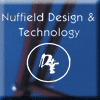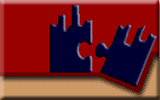Click on the icon or web address to visit sites described below.
 |
Georgia Tech's Learning by Design supports middle-school
students in understanding science by solving constrained
design challenges that require few fabrication skills,
have lots of built-in scaffolding and involve collaboration
in design teams. Tasks include: Vehicles
in Motion (designing a model car with different propulsion systems), Machines That Help
(creating a device that provides mechanical advantage
to do a specified task with little applied force),
and the Model Parachute activity.
|
| |
 |
Nuffield's
Design & Technology UK curriculum utilizes a series
of design-related activities, including resource tasks,
case studies, capability tasks and product evaluations,
to help students design and produce devices and products.
Nuffield helps teachers meet the UK's National Curriculum
standards that require all Key Stage 1-3 students
to take D&T.
|
| |
 |
City College of New York's Stuff That Works! materials
are made for elementary school teachers who want
their students to collect and study low-to-no-cost
everyday technology and then learn how they work.
The series has investigations of Mechanisms, Packaging,
Designed Environments, Mapping, and Signs, Symbols,
and Codes.
|
| |
 |
The TSM Connection Activities were developed by Mark
Sanders and Jim LaPorte out of Virginia Tech and
represent an NSF-funded, groundbreaking effort
at integrating design tasks into the technology
education, science and math classrooms. The binders
containing these coordinated materials are available
through Glencoe/McGraw Hill.
|
| |
 |
Students learn science in Challenges in Physical Science
through observing, testing, understanding, and defending
scientific concepts. Students apply this knowledge
in iteratively developing solutions to constrained
design tasks whose performance can be carefully measured
and reported.
|
| |
 |
Design It! is a NSF-funded curriculum development project
headed by EDC's Bernie Zubrowski that produced a series
of hands-on introductory engineering projects for
after-school use by elementary school students. Published
by Kelvin.
|
| |
 |
Mars:
Dead Or Alive. PBS NOVA series show that describes
the 2004 Mars rover mission, and cushion system used
for the rover's soft landing on Mars. This website
enables high-speed modem users to view 1-hour TV program
in its entirety and has a section that explains the
designing of the entry vehicle's parachutes and also
has a simulation to enable users to design parachutes
for this mission.
|
| |
 |
Annually, the FIRST Robotics Competition engages thousands
of high-school students in after-school work on robot-based
design projects. With the help of local engineers,
students apply knowledge in math, science and technology
to build and program robots that enter regional competitions.
An annual design showdown is held at Epcot Center,
near Disney World in Tampa, FL. Previous challenges
include: Stack Attack (robots collect and stack plastic
containers) and Zone Zeal (robots collect balls from
a playing field).
|
| |
 |
The UC, Berkeley's Web-Based Inquiry Science Environment
(WISE) supports students in doing real-world projects
and debating current scientific controversies.
WISE tasks include: Earthquakes! (predict an earthquake
and make buildings stable during one), Water Quality
(evaluate water by examining chemical, physical
and biological factors), and Organic Food (debate
organic food technology from all sides).
|
| |
 |
Northwestern
University Center for Learning Technologies in Urban
Schools helps teachers support middle-school science
students in asking questions about the world around
them. Investigations include: Communicable Disease
(how diseases spread and how they can be prevented),
Behavior Matters (relationships between animal behaviors
and the environment), and Global Warming (factors
that create and hasten global warming).
|
| |
 |
Illinois State University's Integrated Mathematics,
Science, and Technology aims to make 6th-9th grade
students active learners by solving interdisciplinary,
real-life problems. IMaST's tasks include: Patterns
Above Us (relationship between the atmosphere and
life on the planet), Manufacturing (effectively using
and shaping material when designing, evaluating and
producing products), and Animal Habitats (designing
a balanced ecosystem for a different animal population).
|
| |
 |
State University of New York at Buffalo's Web Based
Technology Education helps students learn about designing
by examining existing models or creating new ones.
Tasks include: Making Safety Light Systems (protect
joggers during morning runs), Drying By Design (dehydrate
fruits while maintaining quality), and Music in the
Digital World (designing instruments used to make
a recording).
|
| |
 |
The Whyville website supports its online community
in doing entertaining and educational scientific
inquiry communication with other users. The project's
materials are particularly aimed towards young
female users.
|
| |
 |
The College of New Jersey's LINKS project helps high
school students develop problem solving and critical
thinking skills by working on practical design projects.
Tasks include: Music and Sound (design a model room
that can reduce interior noise to a stated level),
Marine Technology (design a model marine freighter
that can travel quickly to keep a cargo from drying),
and Spreading the News (designing a multimedia campaign
to inform people about a tech ed program).
|
| |
 |
The College of New Jersey's Children Designing & Engineering
challenges grade K-5 students with real-world problems
that require knowledge in math, science and technology.
Tasks include: Opening Day of the Safari Park (design
habitats for animals and clothes for workers in a
safari park), Earth Friendly Greeting Cards (make
greeting cards using recycled papers), Let's Produce
Juice (design a new juice drink).
|
| |
 |
|